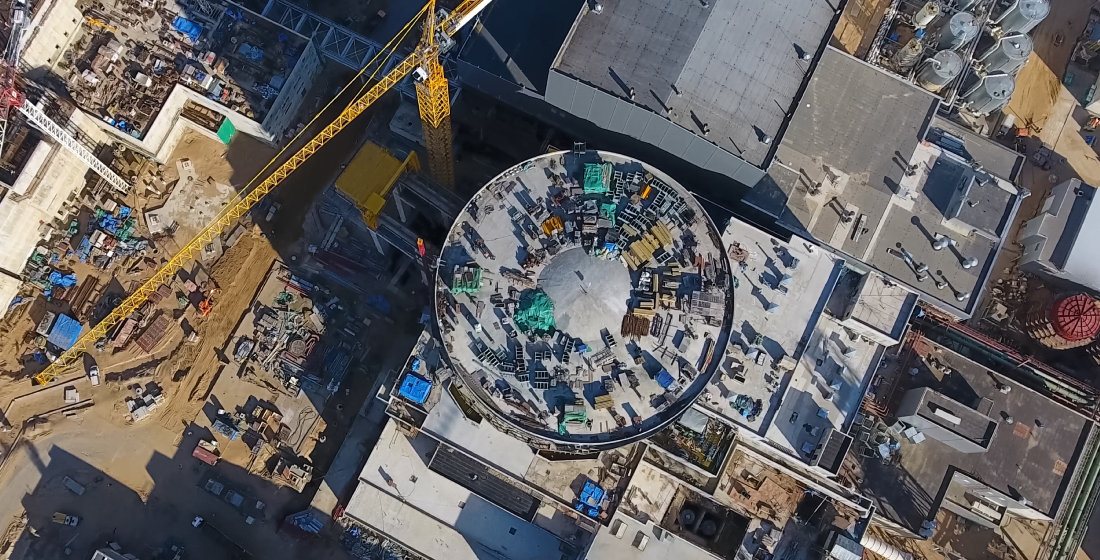Future facing commodities: Lithium
The lithium industry is facing new challenges as prices tumble from the highs of 2022. More sources of supply are coming online to meet anticipated demand but a lack of education continues to create volatility in the market. As governments around the world look to secure their place in the value chain, expect lithium to make more headlines in 2024.

By all accounts, lithium is the darling of the metals markets and the kingpin of the critical minerals. The rate of growth in production has been startling and world output of lithium carbonate equivalent is expected to break one million tonnes for the first time in 2024. Lithium has generated more and more interest alongside its production figures as a key commodity that will power the energy transition.
However, silver linings would not be half as interesting without the clouds and even lithium has not been immune to the building sense of crisis in the global metal markets. Prices for lithium crashed to below $30,000 dollars per tonne in April after a high of around $80,000 in December 2022. After a brief recovery, autumn has brought a fresh tumble.
It is a familiar story across the metals markets. Low prices impact the margins of trading houses and disincentivise fresh investment in new production. Fraud cases undermine faith in the industry and reduce the pool of available financing. The metals value chain has never been more prominent in both government and the mainstream media, but its market dynamics are more fraught than ever.
An opaque market
Headline developments in the lithium industry can often be tied to the progress of the electric vehicle (EV) battery market. The lithium-ion is the most popular design in commercial production and it is this industry that now produces the greatest demand for a number of so-called ‘critical minerals’.
December’s price peak was caused by a surge in both production and demand just before the end of China’s 13-year policy of subsidising purchases of new EVs. This encouraged the kind of frenzied activity often associated with an end-of-sale rush. Consequently, 2023 has largely been characterised by fuller inventories and fewer orders. China is the world’s largest exporter of EVs by some distance, so it should come as no surprise that its policies have an outsized influence on the lithium market.
Since then, lithium has been affected by more muted demand as well as the broader sentiment that continues to hinder metal prices. This period of strife has not changed the consensus that lithium prices will soar as demand for batteries outstrips supply over the coming decade. New sources of production remain limited.
By comparison, the nickel industry has been affected by a glut of output from Indonesia. In September Glencore announced that it would end funding for New Caledonia’s Koniambo Nickel project in 2024 after incurring significant losses due to factors outside its control. Indonesia has been largely successful in securing greater investment in its domestic nickel value chain thanks to its position as a market leader. However, the retrenchment in financing elsewhere will be felt keenly, particularly if governments wish to persevere in their efforts to diversify their commodity sources.
The lithium markets are still nascent in their development and volatility should be expected. Over the course of just a few years the source of demand has shifted dramatically from industry to another emerging sector, the EV market.
Another important factor to consider is the chemical process. Lithium is not a single product. Different sources can produce different products with unique properties. For buyers, sellers and financiers it is important to understand the specific type of lithium under consideration. Not all forms of lithium are suitable for battery production and some are of a higher quality than others.
Brine extraction is the most common form of lithium production but it involves a lengthy evaporation process. Unwanted elements must be left to precipitate, leaving behind water with a high concentration of lithium. Specialist refineries can then extract the lithium through a series of chemical treatments. Lithium can also be found through hard-rock mining for minerals like spodumene, but this is an expensive process. Lithium carbonate is cheaper to produce than lithium hydroxide, but the latter is more suitable for battery-makers.
The financial markets have not yet had the time or opportunities to develop instruments that fully capture the complexities of the lithium industry. At this time it should be sufficient to say that the headline figures around lithium prices do not always accurately convey the state of the market.
As Dr Cameron Perks, Principal Lithium Analyst at Benchmark Mineral Intelligence put it to TXF, “the average investor will be struck by the level of opacity around the formulas and contracts that are being used in the industry as well as the amount of supply and demand that is in the market. The volatility [in supply and in price] is partly a symptom of this opacity and a lack of education among some investors.”
For these reasons, lithium is still a commodity that is largely delivered under long-term contracts between producers and their customers rather than at spot prices. Given the volatility that the market has already seen over the last year, traders will be looking for more sources of supply to come online before they develop significant lithium portfolios.
The search for supply
The future of the lithium industry will depend upon more sources of supply coming online. At present a steady balance between supply and demand has been maintained but this could change if investment fails to keep up with expected demand for batteries.
Lithium production is currently dominated by China, Australia and the so-called ‘lithium triangle’ in Latin America. Australia is home to the largest hard-rock mines, including the Greenbushes project, Pilgangoora and Mt Cattlin, all located in Western Australia. Argentina and Chile produce large quantities of lithium brine from vast salt lakes.
Rapid growth has encouraged exploration across the world as investors look for the next major source of production. However, the process between first discovery and delivery of output is blighted by issues that are common to any new mining project.
Bolivia has long been seen as a potential industry giant, with reserves that could make it the world’s largest producer of lithium. It is yet to make any meaningful contribution to the market despite first announcing plans to build a lithium industry more than 15 years ago. Political strife and internal disagreements have largely held up progress and the government’s insistence upon retaining sovereign control has denied it access to the expertise on offer from international mining companies.
Local communities have also expressed suspicion and even hostility towards major lithium projects. In 2019 a planned EV battery factory and a lithium hydroxide facility were cancelled after protests and strikes in the Potosi region. Residents said that they wanted greater assurances around the economic benefits for the region and the environmental impact of lithium extraction.
Elsewhere a number of countries are exploring more modest reserves. The rush to secure lithium has led the United States government to dismiss the protests of Native American tribal groups in order to begin construction at the Thacker Pass project in Nevada. This year Zimbabwe has opened a new spodumene concentrate plant that will expand production from the Bikita mine to 300,000 metric tonnes.
Bolivia’s neighbours have the technical capacity and the reserves to ramp up production but there is uncertainty. In April 2023 Chilean President Gabriel Boric revealed plans to nationalise the country’s lithium industry and introduce a state-owned firm. While current contracts will not be terminated, new deals will only be issued on a public-private basis and the government is in talks with Albemarle and SQM to transfer control of their assets over time. Already a mining tax reform has increased the royalties owed by producers of copper and lithium.
The value chain
Chile offers just a hint of the geopolitical issues that are increasingly affecting the metals industry. As Dr Perks argues, “what's more interesting is the nuance between who's got access and who doesn't. Where's the battery grade material coming from?”
That’s certainly a question occupying legislators in Europe, where a draft Critical Raw Materials Act is currently passing through the EU’s various committee stages. It aims to provide a framework for a secure and sustainable critical minerals value chain with a focus on developing domestic facilities and reducing strategic dependencies.
Details are still scant, not least on what forms of financing the EU will offer to support new projects. This factor will be crucial given the global nature of the international metals trade. Dr Sebastian Hofert von Weiss, Head of Project Finance at EY-AHB, told TXF: “There's no black and white here. The Act covers the whole value chain - some steps can happen in Europe but (at least at the moment) it means that one is reliant on facilities abroad for pre-processing. Diversifying these to multiple jurisdictions is a key goal to be achieved to avoid dependency on a single state or region.”
This will necessitate a healthy mix in support for both downstream and upstream facilities within Europe and abroad. An EU export credit facility has been mooted as a way of mobilising the bloc’s financial power but more detail on how such a facility would work has not been forthcoming. Europe’s ECAs have already acted unilaterally to guarantee project financing for a number of new mines around the world.
Lake Resources is expected to close an ECA-backed deal for its flagship Kachi lithium project in Argentina by early 2024. The deal has garnered interest not only because of its green credentials but because of the technology that underpins it. While most lithium brine facilities waste large quantities of water as part of the purification process, Lake Resources hopes to implement a direct extraction process that will return the brine to source.
The EU will no doubt be aware that time is of the essence. New mines and refineries are not built in a day and fresh mineral sources are finite. Just last week, the French mining giant Eramet issued a stinging critique of Europe’s attitude to mining projects after inking a deal with China’s Tsinghan to finance its own lithium projects in Argentina.
Dr Hofert von Weiss foresees trouble if clarity does not arrive soon: “The current uncertainty creates serious obstacles for implementing projects. The draft Act contemplates a number of obligations for projects ranging from regular auditing to the monitoring and reporting of strategic stocks. Such obligations come at a (considerable) cost and need to be factored in when setting up and financing the project.”





